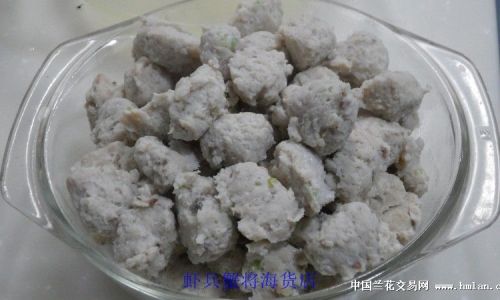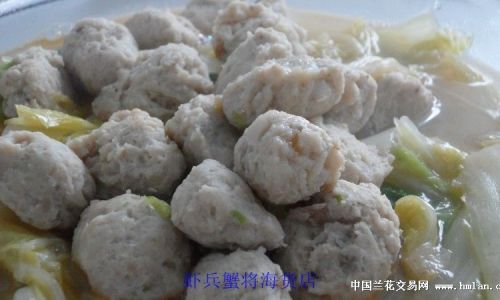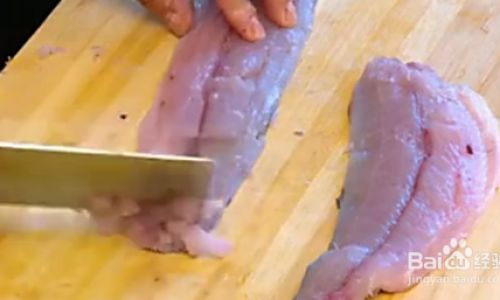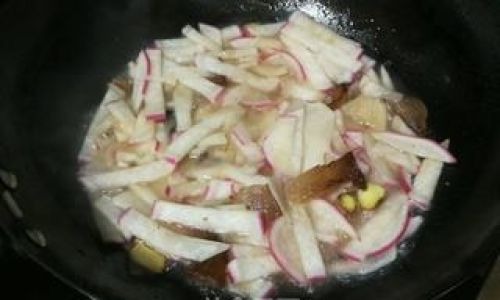Introduction
Spanish mackerel, a silvery-skinned fish prized for its rich flavor and tender texture, has long been a staple in coastal cuisines worldwide. Among the myriad ways to prepare this versatile ingredient, few dishes rival the simplicity and satisfaction of homemade Spanish mackerel balls. These delicate orbs, often simmered in broth, pan-fried to golden perfection, or served as a standalone appetizer, embody the essence of seafood delicacy. Crafting the perfect mackerel ball requires attention to detail, from selecting the freshest fish to balancing flavors and textures. This article delves into the nuances of creating restaurant-quality Spanish mackerel balls at home, offering a comprehensive guide to ingredients, techniques, and creative variations. Whether you’re a seasoned home cook or a curious novice, this journey will equip you with the skills to transform humble ingredients into a dish that tantalizes the taste buds and impresses even the most discerning diners.
Chapter 1: Understanding the Star Ingredient
Spanish mackerel (Scomberomorus maculatus) is a pelagic fish found in temperate and tropical waters. Its flesh, firm yet flaky, boasts a mild, slightly sweet flavor with a hint of brininess—a profile that lends itself beautifully to ball-shaped preparations. When selecting mackerel for this dish, prioritize freshness: look for clear eyes, shiny skin, and a sea-breeze aroma. Frozen fillets can work in a pinch, but fresh fish yields superior texture and taste.
Beyond the fish itself, the supporting cast of ingredients plays a pivotal role. Aromatics like ginger, garlic, and spring onions add depth, while binders such as egg whites or cornstarch ensure the mixture holds its shape. Seasonings—soy sauce, sesame oil, white pepper—elevate the dish without overpowering the mackerel’s natural essence. For a touch of luxury, consider incorporating ingredients like dried shrimp or wood ear mushrooms, which introduce umami-rich complexity.
Chapter 2: Mise en Place: Preparing Your Ingredients
Before diving into the mixing bowl, meticulous preparation is key. Start by filleting the mackerel: use a sharp knife to remove the skin, then scrape the flesh away from the bones, discarding any dark bloodlines that could impart bitterness. Rinse the fillets under cold water and pat them dry with paper towels—excess moisture will make the mixture soggy.
Next, mince the fish. For the lightest texture, avoid using a food processor; instead, wield a cleaver or chef’s knife to chop the flesh into a coarse paste. Aim for a balance: too fine, and the balls become dense; too chunky, and they may fall apart during cooking.

Aromatics demand equal care. Finely mince garlic and ginger until they form a fragrant paste. Slice spring onions into thin rings, reserving some for garnish. If using wood ear mushrooms, rehydrate them in warm water, then chop into tiny pieces. These ingredients not only flavor the mixture but also contribute subtle textural contrasts.
Chapter 3: The Science of Binding
Achieving the perfect mackerel ball texture hinges on the right binder. Egg whites, when lightly beaten, act as a cohesive agent without adding heaviness. Cornstarch or potato starch serves a dual purpose: it absorbs excess liquid and imparts a velvety mouthfeel. Begin by combining the minced fish with the aromatics and seasonings, then gently fold in the binder.
Here’s a critical tip: overmixing is the enemy of tenderness. Stir just until the ingredients are homogenized; overworking the mixture will toughen the proteins, resulting in rubbery balls. Chill the mixture for 30 minutes before shaping—this firms up the fat and allows the flavors to meld, ensuring the balls hold their shape during cooking.
Chapter 4: Shaping Techniques for Perfect Orbs
Shaping mackerel balls is an art in itself. The goal is uniformity—each ball should cook evenly and present beautifully. For consistency, use a small ice cream scoop or a tablespoon measure. Dip the utensil in cold water between scoops to prevent sticking.
Alternatively, roll the mixture between your palms. Lightly oil your hands to reduce friction, then scoop a portion of the mixture and gently shape it into a smooth ball. Avoid compacting too tightly; a light touch preserves the delicate texture.
For a rustic twist, experiment with oval or quenelle shapes. However, spheres remain the classic choice, as they cook uniformly and maximize surface area for browning, if frying.
Chapter 5: Cooking Methods Unveiled
The cooking method you choose profoundly impacts the final dish. Here are three approaches, each with its merits:
-
Poaching in Flavorful Broth
Simmer the balls in a delicate broth infused with ginger, spring onions, and light soy sauce. This gentle method preserves the mackerel’s tenderness and infuses it with aromatic flavors. Bring the broth to a bare simmer (avoid boiling, which can break the balls), then lower the heat and cook for 5–7 minutes until they float to the surface.
-
Pan-Frying for Crispy Exteriors
For a textural contrast, pan-fry the balls. Heat a neutral oil (like vegetable or canola) in a nonstick skillet over medium heat. Gently place the balls in the pan, leaving space between them. Fry until golden brown on all sides, about 3–4 minutes per side. This method creates a crisp crust while keeping the interior moist. -
Simmering in Soup
Incorporate the balls into a hearty soup, such as a clear consommé or a tomato-based broth. Add them during the final 10 minutes of cooking to prevent overcooking. The soup’s flavors permeate the balls, creating a harmonious bite.
Chapter 6: Sauces and Accompaniments
No mackerel ball dish is complete without complementary sauces and sides. A classic dipping sauce combines soy sauce, rice vinegar, sesame oil, and a pinch of sugar. For heat, add minced chili or a dash of Sriracha.
Pair the balls with steamed jasmine rice, pickled vegetables, or a crisp cucumber salad to cut through the richness. Garnishes like chopped cilantro, toasted sesame seeds, or fried shallots add visual appeal and textural variety.
Chapter 7: Creative Variations and Flavor Twists
Once you’ve mastered the basics, unleash your creativity. Here are five variations to experiment with:
-
Herb-Infused Balls
Incorporate finely chopped herbs like dill, parsley, or cilantro into the mixture for a fresh twist. -
Spicy Sichuan-Style
Add Sichuan peppercorns, doubanjiang (chili bean paste), and a splash of Shaoxing wine for a fiery kick. -
Curry-Spiced Balls
Mix in curry powder, turmeric, and a touch of coconut milk for an Indian-inspired dish.
-
Cheese-Stuffed Surprise
Hide a small cube of mozzarella or cheddar inside each ball for a molten center. -
Vegan Alternative
Substitute mashed chickpeas or tofu for the mackerel, and use flax eggs as a binder.
Chapter 8: Troubleshooting Common Pitfalls
Even seasoned cooks encounter hiccups. Here’s how to fix them:
- Soggy Balls: Ensure the fish is thoroughly dried before mincing. Increase the cornstarch by 1–2 teaspoons.
- Falling Apart During Cooking: Chill the mixture longer, or add an extra egg white.
- Overly Fishy Taste: Soak the fillets in milk for 15 minutes before mincing to neutralize odors.
- Dry Texture: Reduce cooking time by 1–2 minutes, or add a splash of broth when reheating.
Chapter 9: Storing and Reheating Leftovers
Leftover mackerel balls can be refrigerated for up to 3 days or frozen for 2 months. To reheat, simmer gently in broth or warm in a low-temperature oven (300°F/150°C) to preserve moisture. Avoid microwaving, which can toughen the texture.
Chapter 10: The Cultural Tapestry of Mackerel Balls
Beyond the kitchen, mackerel balls hold cultural significance. In coastal regions of Asia, they’re a Lunar New Year staple, symbolizing abundance and togetherness. In Mediterranean cuisine, similar preparations appear in fishermen’s stews, a testament to the fish’s global appeal.
Conclusion
Crafting Spanish mackerel balls is a labor of love—one that rewards patience and precision with unparalleled flavor. From the initial chop of the knife to the final sizzle in the pan, each step is a celebration of seafood’s transformative power. Whether you prefer them poached in broth, fried to crispy perfection, or nestled in a fragrant curry, these balls offer a canvas for culinary creativity. So gather your ingredients, roll up your sleeves, and embark on a journey to savor the magic of Spanish mackerel in every bite. Bon appétit!
Word Count: 1,920






0 comments